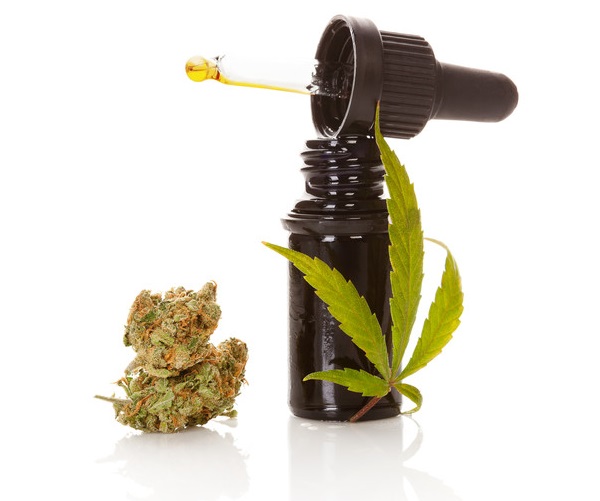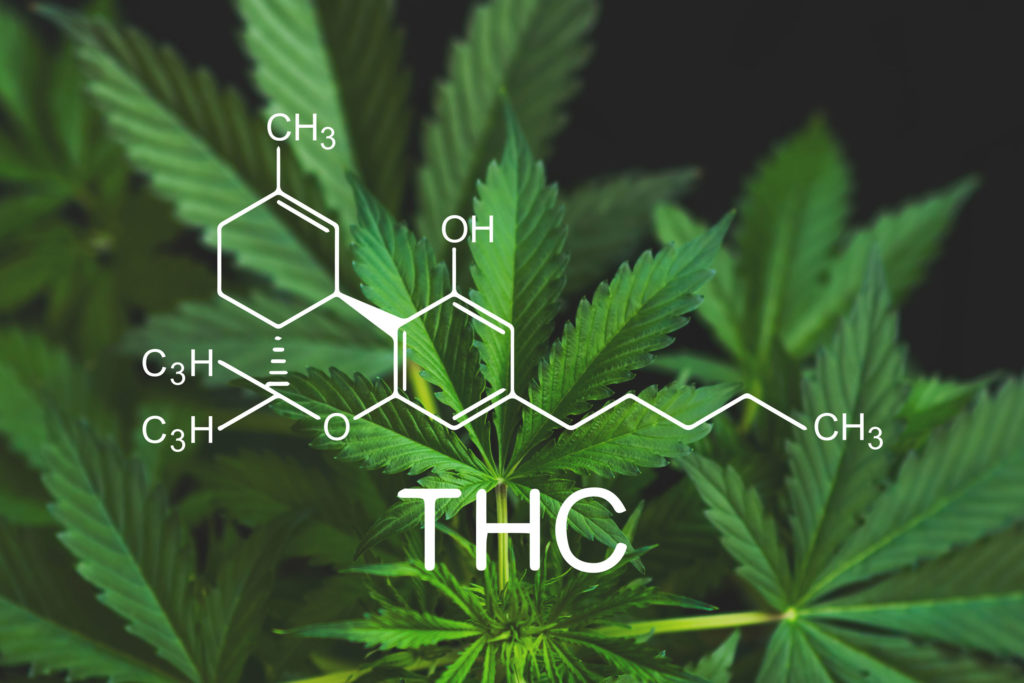In this article, we will briefly explore the potential benefits of THC and the different ways to use it.
THC, or tetrahydrocannabinol, is the chemical responsible for most of marijuana’s psychological effects. It acts much like the cannabinoid chemicals made naturally by the body.
Cannabinoid receptors are concentrated in certain areas of the brain associated with thinking, memory, pleasure, coordination and time perception. THC attaches to these receptors and activates them and affects a person’s memory, pleasure, movements, thinking, concentration, coordination, and sensory and time perception historically speaking, legend says that in 2737 The Mythological Emperor Shen Nung first used Cannabis as a medicine. Shen Nung is considered by some to be the Father of Chinese Medicine, and by others to be a higher deity, Culture Hero, and God Farmer, and was said to be horned, ox headed, and bronze skulled.
Artwork from the Han Dynasty depicts legends of The God Farmer “Shennong” teaching mankind how to use the plow along with other basic concepts of agriculture like the hoe and irrigation. Shen Nung is a heroic figure in the legends of Chinese Medicine and is credited in some myths of having also created acupuncture. He is said to have tasted 365 plants, seeds, and flowers in his search to discover and explore for medicinal properties, and cannabis was among them. In some versions of the legend, he died from an overdose upon tasting his 365th plant. “The Shennong Bencaojing”, also known as The Classic of Herbal Medicine, was a treatise on Chinese Medicine and had descriptions and entries for the 365 herbal medications discovered by Shen Nung, who the work is attributed to.
Historians believe The Shennong Bencaojing was written between 200 and 250 AD, and was a collected compilation of oral traditions. Cannabis was one of the 120 plants covered in the first volume, which was various “upper” and “noble” drugs that were considered harmless to humans but beneficial due to their stimulating properties, including the psychotropic effects of cannabis. The Cannabis flower was said to cure over 100 different ailments in the ancient medical text.
Benefits of THC
#1.) THC Provides Pain Relief
Pain relief is one of the top medical benefits of THCMore than 1.5 billion people worldwide live with chronic pain. Many of these individuals suffer from neuropathic pain or nerve-related pain.
Studies show that the cannabis compound activates pathways in the central nervous system that block pain signals from being sent to the brain.Individuals experiencing neuropathic pain were given low doses of THC “A low dose of delta-9-tetrahydrocannabinol provided statistically significant 30% reductions in pain intensity when compared to placebo.” it is clear that a positive correlation exists between THC and pain relief.
#2.) Protects Brain Cells
Reefer madness led a lot of people to believe that cannabis consumption kills brain cells. However, the reality is this could not be further from the truth.
While most drugs are neurotoxic, THC is considered to be neuroprotectant. Which means that it actually protects brain cells from damage.
Here’s a mind-blowing example: a study in 2014 found that people with THC in their systems were 80 percent less likely to die from traumatic head injuries than those without.
#3.) Effective Sleep Aid
Have trouble sleeping? Research shows that THC health benefits play a role here as well.There are several causes of insomnia, ranging from anxiety to chronic pain. Recurring nightmares, often caused by PTSD, can also severely disrupt sleep. Research shows that cannabis reduces REM sleep, which is the sleep cycle in which dreams occur. For PTSD sufferers, THC may offer relief from insomnia brought on by trauma associated sleep disorder.
#4.) Helps Treat PTSD
PTSD can include symptoms such as agitation, severe anxiety, depression, insomnia, nightmares, and social isolation – it can be a crippling condition.Yet, THC has shown to be a highly effective treatment option for PTSD.Some psychiatrists say that THC-rich cannabis is the only treatment for PTSD.
In fact, studies have confirmed that THC eases a variety of PTSD-related symptoms including agitation, depression, insomnia, flashbacks, and nightmares.
This means that for those suffering from PTSD, they can finally get the peaceful sleep they need to heal and regain balance in their lives.
#5.) Promotes Brain Growth
Believe it or not, the medical benefits of THC for the brain may be even bigger than we thought. Not only does the psychoactive protect brain cells, it also stimulates brain growth.
How does it work?
THC activates the “CB1 receptor” in our brains. This stimulation promotes a process known as long-term potentiation which improves the brain’s ability to learn.
Scientists also discovered that like CBD, THC causes brain cells in the hippocampus to grow.
Some research even suggests that THC can protect spatial memories.
This is why small doses of cannabis can treat or even slow down diseases such as Alzheimer’s. THC can also help protect against Alzheimer’s in other ways, too.
If that weren’t enough, we also have a study showing people with THC in their systems are 80% more likely to survive head trauma!
#6.) THC Increases Appetite
THC is known for increasing appetite.
Researchers have found that THC interacts with the same type of receptors in the hypothalamus that release the hormone ghrelin, which stimulates hunger. In fact, THC can even make food taste better.
While some have written off these effects as a case of the “munchies” there is something much more profound going on here.
With the right approach, THC hunger-inducing effects can dramatically improve quality of life. And in some cases, even save lives.
Interestingly, certain cannabis cultivars can also suppress appetite, which can be another advantage for a lot of people.
#7.) Enhances Senses
You may not consider this among the other THC health benefits, but many people have steered away from THC due to its psychoactive effects.Cultures across the globe incorporated the plant in spiritual ceremonies and rituals for this very purpose.
While the psychoactive effects of THC may not agree with everyone, that doesn’t mean we all should steer clear.Especially given that it is impossible to fatally overdose on THC.Cannabis used with intention and the right dosage levels provides countless benefits.From life-changing revelations to enhanced creativity to deeper personal insights.
For many people, the enhancing effects of THC provide very real psychological benefit and relief.
#8.) Antioxidant
There’s a reason why cannabis has been touted as an anti-aging and anti-stress tool.THC and other cannabinoids are potent antioxidants.This isn’t surprising, considering that in addition to protecting cannabis plants from pathogens, the herb increases its THC production in response to UVB light.UVB light is the type of light that causes oxidative stress in humans, contributing to visible aging and other skin diseases.Oxidative stress can cause damage at both cellular and DNA levels.
This damage makes consumers more prone to serious ailments like cancer and neurodegenerative illness.As a potent antioxidant, one of the many health benefits of THC is protecting the body from stress-related damage.
#9.) Anti-inflammatory
Inflammation is a hot topic in the healthcare world these days.
Why?Chronic inflammation is considered a major risk factor for all different kinds of diseases.Depression? There’s an inflammatory component.Arthritis? Inflammation contributes to pain, stiffness, and poor health over time..
Research suggests that, in some instances, the cannabis compound can decrease the production of cytokine and chemokine compounds in the body.Cytokine and chemokines are immune compounds that trigger inflammation.
Additional pre-clinical research suggests that it may be able to decrease inflammation by suppressing genes related to an inflammatory response.
These findings may explain why so many consumers find relief via the many health benefits of THC.
#10.) Bronchodilator
Lung health is not often the first thing you think of when considering the health benefits of THC.Yet, believe it or not, the compound may help open airways in your lungs.
A known bronchodilator, studies conducted back in 1975 provided the first evidence of the cannabinoid’s ability to ease asthma attacks.Interestingly, the study found that even smoked cannabis eased patent’s asthma symptoms. The psychoactive may not be the only cannabis compound that may assist the lungs.A particular terpene, pinene, may enhance the bronchodilatory effect of THC.As the name suggests, pinene is an aroma molecule that provides a strong pine scent to some cannabis cultivars.Cannabis strains that feature high levels of pinene may provide enhanced bronchodilatory effects.
#11.) Potential anti-tumor agent
Cannabis is making waves in the realm of cancer research.
Early research in the lab and in animal models has found that the herb kills cancer cells in several distinct ways.
While multiple cannabinoids show anti-cancer potential, THC is one of the main contenders.
Dr. Gregory Smith, a Harvard-trained physician, discussed this with Green Flower, touching on emerging evidence that suggests that the psychoactive and other cannabis compounds have strong anti-cancer potential.
Specifically, Dr. Smith mentioned that there three distinct ways that cannabis affects cancer.
The first is through a process called apoptosis, which is an immune function that triggers cells to self-destruct when they are damaged or diseased.
“[Cannabis] does that apoptosis, that horrible word, that tells the cancer cell to go kill itself. It’s literally a key that turns a lock and tells the cell to kill itself”.Also the cannabinoid can block a tumor from forming blood vessels.
This essentially starves the cancer cells by cutting off their food and oxygen supply.
In addition, cannabis compounds seem to stop cancer cells from metastasizing, “It stops the cancer cell from leaving the colony of other cancer cells and going and forming its own new metastatic area in the body.”
#12.) Muscle relaxant
Have you ever tried cannabis that made you feel sleepy or heavy-bodied?
THC and some complementary terpenes in certain cannabis strains may be the culprit.
It is well-known that the cannabinoid can have muscle relaxant properties.
This quality is perhaps partly why the compound is so beneficial to patients with conditions like multiple sclerosis, who often experience muscle spasticity, pain, and cramping.
While THC is thought to have muscle relaxant properties on its own, the molecule’s ability to ease cramps and tension may be enhanced by certain aroma compounds in the plant.
Some experts suggest that myrcene, a terpene aroma molecule with a musky fragrance, may also contribute to the heavy-bodied sensation that sometimes follows a night of cannabis consumption.
Different Ways To Use THC
Inhalation
When you inhale cannabis, all the active compounds, including THC, are absorbed into the bloodstream through the lungs. The time between inhalation and the compounds hitting your brain is almost immediate, making it the go-to for cannabis users looking for a near-instant high.
There are two main ways to inhale cannabis: smoking and vaping.
Smoking
Smoking is one of the most well-known consumption methods. When you smoke cannabis, you’re lighting cannabis flower and inhaling the smoke.
There are a variety of ways to smoke cannabis flower.
- Pipes: Pipes are small, compact, and easy-to-use, making them one of the most popular devices for smoking cannabis. To use a pipe, add the cannabis to the bowl-shaped area at one end (known as “packing a bowl”) and light. Smoke travels through the pipe’s chamber and exits through the mouthpiece, where you inhale.
- Water pipes: Water pipes, including bongs and bubblers, work similarly, but the smoke is filtered through water held in a chamber. The water cools down the smoke, creating a smoother inhalation experience.
- Joints: If pipes aren’t your style, consider joints as an alternative. Joints are created by rolling cannabis into rolling papers — similar to a cannabis cigarette, before lighting one end and inhaling through the other.
- Blunts: Blunts are similar to joints, only they use cigar paper instead of rolling papers. Usually, a cigar is hollowed out and the tobacco replaced with weed but you can buy blunt wraps. Blunts are also typically larger and contain more cannabis than joints.
Vaping
Vaping is another inhalation method that’s gained popularity with recent advances in technology. Vaping involves using a device to heat either cannabis flower or concentrate to right below the point of combustion, which ranges between 356 and 374 degrees Fahrenheit. This transforms the active compounds, like cannabinoids and terpenes, into vapor, which is then inhaled.
Vapor doesn’t release the same tar or carcinogens that are created when you burn flower, which many believe makes vaping a healthier alternative to smoking.
There are a few different ways to vape cannabis.
- Vaporizers: Vaporizers can be used with both concentrate and flower. Add the cannabis to a heating chamber, adjust the temperature, and inhale the vapor through the mouthpiece. Vaporizers come in both tabletop versions, which need a solid surface to stand on, and portable versions.
- Vape pens: Vape pens are specifically designed for oils or distillates. As the name implies, they typically look like pens. These devices are made up of a cartridge, which contains the cannabis oil or distillate, and a battery, which provides the heat. Make sure you buy vape pens from a legal, reputable dispensary, as illegal, off-label vapes have been linked to lung disease.
- Dabbing: Dabbing is a method of vaporizing cannabis concentrate using a dab rig, which entails heating a glass, ceramic, or titanium “nail” and applying the concentrate directly to the hot surface, which turns it into vapor for consumption.
Oral

There are two main ways to consume cannabis orally.
- Edibles: When you ingest a cannabis-infused beverage, baked good, or gummy the cannabinoids are absorbed through the digestive tract. Because of this, edibles have a delayed onset, between 20 minutes and three hours. Edibles are one of the most straightforward consumption methods out there. Just eat or drink, swallow, and wait for the effects to kick in.
- Tinctures: Are absorbed through the blood vessels under the tongue (sublingually). To get the full effect, put a few drops of the tincture under your tongue and hold it there, allowing the cannabis to absorb. Then swallow the remaining liquid. Any cannabinoids not absorbed sublingually will be absorbed through the digestive tract. The dual absorption locations mean tinctures taken sublingually can have rapid onset of effects as well as another onset later, like an edible.
Everyone is going to have their preferred consumption method for cannabis. Many people find that incorporating multiple types of products is the best solution. Sometimes you need something that will kick in fast, sometimes you need a product that lasts a long time, and sometimes you need both. Now that you know how all of the consumption methods work, you can create your own regiment and find cannabis products that meet your specific needs
LEARN MORE : https://hempearth.ca/
BUY NOW : https://hempearth.ca/shop/










